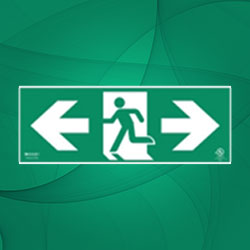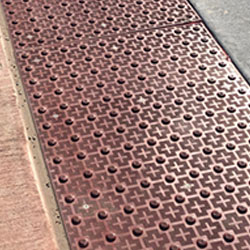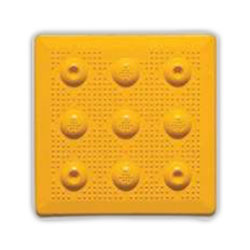
















































































































Urban accessibility refers to the ease with which people with disabilities or other access needs can navigate and participate in city environments. It is a key pillar of inclusive urban design. When implemented thoughtfully, accessibility measures empower and include vulnerable groups while enhancing cities for all users.
As a leading supplier of tactile warning systems in Canada, we at Tactile Solution advocate for accessibility across infrastructure, technology, policies, and attitudes. In this blog, we analyze global leaders in accessible urban planning and extract key learnings for Canadian cities.
Over 15% of the global population lives with some form of disability, ranging from mobility and sensory issues to cognitive conditions. These groups face daily barriers navigating inaccessible built environments – curbs without curb cuts, narrow hallways, lack of audio cues or Braille signage, and more.
Beyond permanent disability, anyone can experience situational limitations at some point, like using crutches after an injury. An aging population also increases demands for accessibility as mobility declines.
The Accessibility for Ontarians with Disabilities Act (AODA) outlines a clear moral and legal imperative for accessibility in Canada. Most countries worldwide have similar regulations. Beyond legal obligations, accessibility enables social participation and autonomy for all people regardless of ability – a fundamental human right.
Over 80% of Canadians live in cities today. This number will only grow over the coming decades. The design of these urban landscapes has an outsized impact on the quality of life for residents.
Urban planning teams shape the built environment through policies, zoning, transportation networks, public spaces, infrastructure standards, etc. These planning decisions either erect or tear down accessibility barriers at a mass scale.
Some key facets that determine the accessibility of a city include:
Public Transit: Access to low-floor buses, accessible trains, wayfinding in transit hubs, etc.
Streets & Sidewalks: Curb cuts, pedestrian crossings, rest areas, maintenance, etc.
Parks & Public Spaces: Sensory gardens, inclusive playgrounds, tactile wayfinding, parking, etc.
Civic Infrastructure: Government offices, libraries, community centers, voting stations, etc.
Housing: Visitable homes, universal design standards, affordable options, etc.
Digital Access: Assistive technologies, apps, virtual services, automated systems, etc.
Awareness & Inclusion: Disability representation, cultural sensitivity training, outreach programs, etc.
When all these aspects are designed inclusively, they collectively enable people with disabilities to access education, employment, healthcare, recreation, and all facets that contribute to an independent and fulfilling life.
Many international cities have become pioneers of accessible urban design. Though no city has achieved perfect accessibility, we can extract key lessons from those setting the bar.
This island city-state ranks among the most accessible cities globally thanks to holistic, accessible development policies mandated by its government.
All new infrastructure projects must adhere to Universal Design principles such as barrier-free access. Public housing encompasses 80% of residential buildings, most built with accessibility in mind. Singapore actively consults disability advocacy groups to guide planning decisions.
A comprehensive quality of life index tracks progress on inclusion and accessibility. Mass transit offers low-floor buses and barrier-free routes from homes to destinations like community centers. Apps provide navigation assistance tools powered by AI.
Legacy infrastructure poses accessibility challenges in old European cities like London. Yet concerted revitalization initiatives are transforming districts into beacons of accessibility.
A prime example is the new King’s Cross regeneration project. The 67-acre site has been reimagined as a model of inclusive urban design. Nearly a third of new housing is explicitly dedicated to disabled residents. Tactile walking maps help navigation while audio beacons announce points of interest. The neighborhood connects seamlessly with accessible public transit.
Such decentralized district-based retrofitting allows old cities to pivot towards accessibility one area at a time.
The world’s largest metropolitan area, Tokyo, offers a test case in making densely populated megacities accessible, though significant room for improvement remains.
Accessibility initiatives picked up steam leading into the 2021 Olympics. This includes nearly universal access to subway systems thanks to platform screen doors, tactile surfaces, and accessible carriages. Accessible taxis receive government subsidies to aid affordability.
Apps provide navigation assistance and disability resource access information. Barrier-free routes connect major tourist attractions like the Tokyo National Museum to transit hubs. Tactile walking surface indicators aid navigation in commercial centers.
Tokyo proves that even the most populated cities can make progress on accessibility with sustained government commitment.
Though ranking decently on disability inclusion, Canada has ample room to emulate global leaders. Our key takeaways include:
Legislate accessibility requirements into building codes, infrastructure standards, and zoning policies at all government levels.
Actively partner with disability advocates to guide urban planning decisions instead of ineffective “deciding for” approaches.
Establish quantitative goals and track detailed metrics on inclusion efforts. What gets measured gets managed.
Mobility is essential for participation. Ensure affordable, reliable, accessible transit across buses, trains, taxis, and innovative platforms like rideshares.
Bring accessibility interventions together at the district scale for exponential impact rather than scattered, disconnected efforts.
Provide tax benefits, grants, and resources for businesses undertaking accessibility improvements.
Promote accessibility and disability awareness through media representation, education campaigns, and leading by example in the public service realm.
An often overlooked yet pivotal dimension of urban accessibility involves navigation tools for the vision impaired. Detectable warning surfaces provide essential environmental cues to enhance mobility.
Proper tactile design requires careful consideration of placement, product specifications, and installation methodology. Our team possesses extensive expertise in AODA, ACA, CSA B651, and NBC compliance. We actively advise urban planning agencies on correctly integrating tactile wayfinding and hazard warning surfaces.
Tactile indicator applications include:
Public Transit Platforms: Detect platform edge drop-offs with attention tactile system
Sidewalks & Trails: Define boundaries between pedestrian and vehicular zones
Parks & Plazas: Guide visitors with wayfinding tactile to key places like information kiosks and counters
Civic Institutions: Embed wayfinding paths leading to entranceways
Commercial Spaces: Help users locate checkout points, directories, seating areas, and more
And much more.
The collective lessons from global leaders demonstrate that accessible urban design relies on coordinated efforts across infrastructure, regulations, technologies, and changing hearts and minds.
While progress takes sustained commitment, every step moves us closer to cities that empower all citizens regardless of ability or circumstance. It is time for Canada to become the benchmark for inclusive communities.
Reach out to our team at Tactile Solution Canada to learn about our tactile and accessible attention and wayfinding products, helping realize this vision one public space at a time.
Here are some common questions about urban accessibility and inclusive city planning:
Mandates like AODA levy financial penalties for non-compliance. Many cities also provide tax credits and grants to incentivize voluntary adoption of Universal Design.
Ontario, Calgary, Montreal, and Ottawa consistently rank among the most accessible in global city indices. However, all cities have room for considerable improvement.
Priorities include public transit, civic institutions, public housing, and disabled-friendly downtown districts well connected through barrier-free routes.
Where retrofitting is unrealistic, supplementary measures like ramps over stairs, wheelchair lifts, and audio guides improve accessibility. Tactile wayfinding is invaluable for navigating aged complex sites.
DIY improvements like curb-cut ramps, sensory gardens in vacant lots, vibrant crosswalks, and pedestrian plazas can rapidly transform accessibility.
Contact our team at Tactile Solution Canada to learn more about building inclusive cities!
